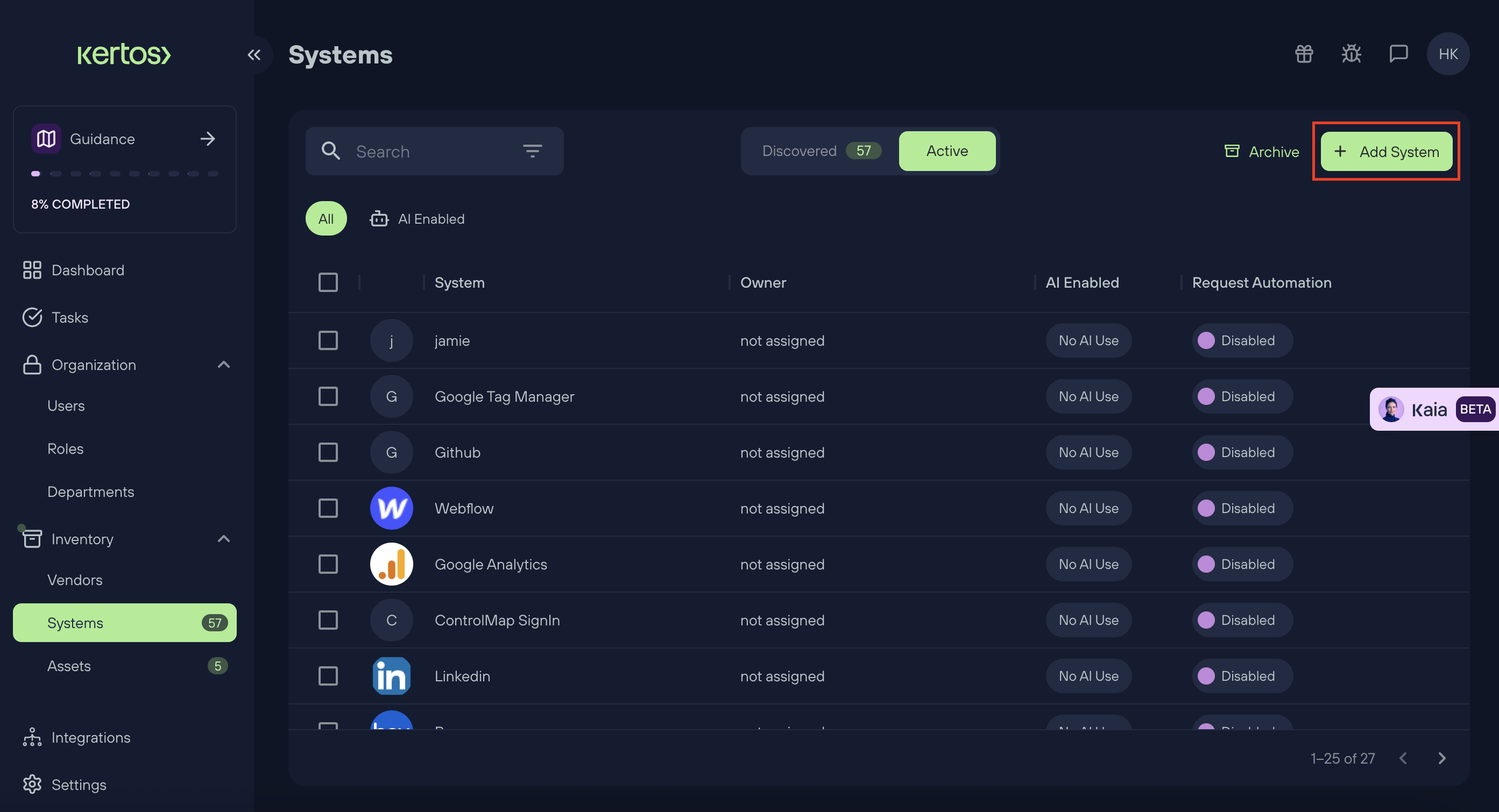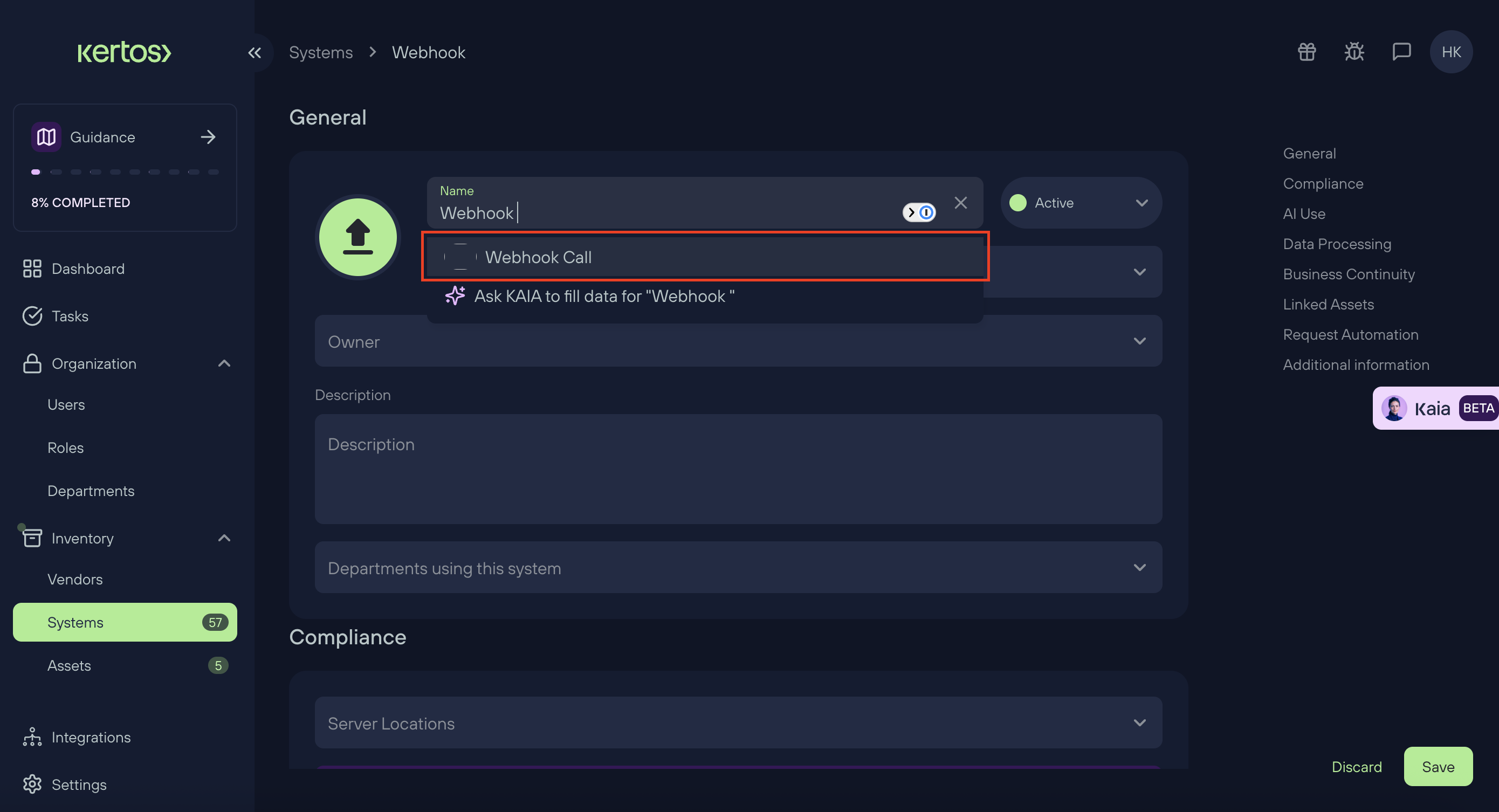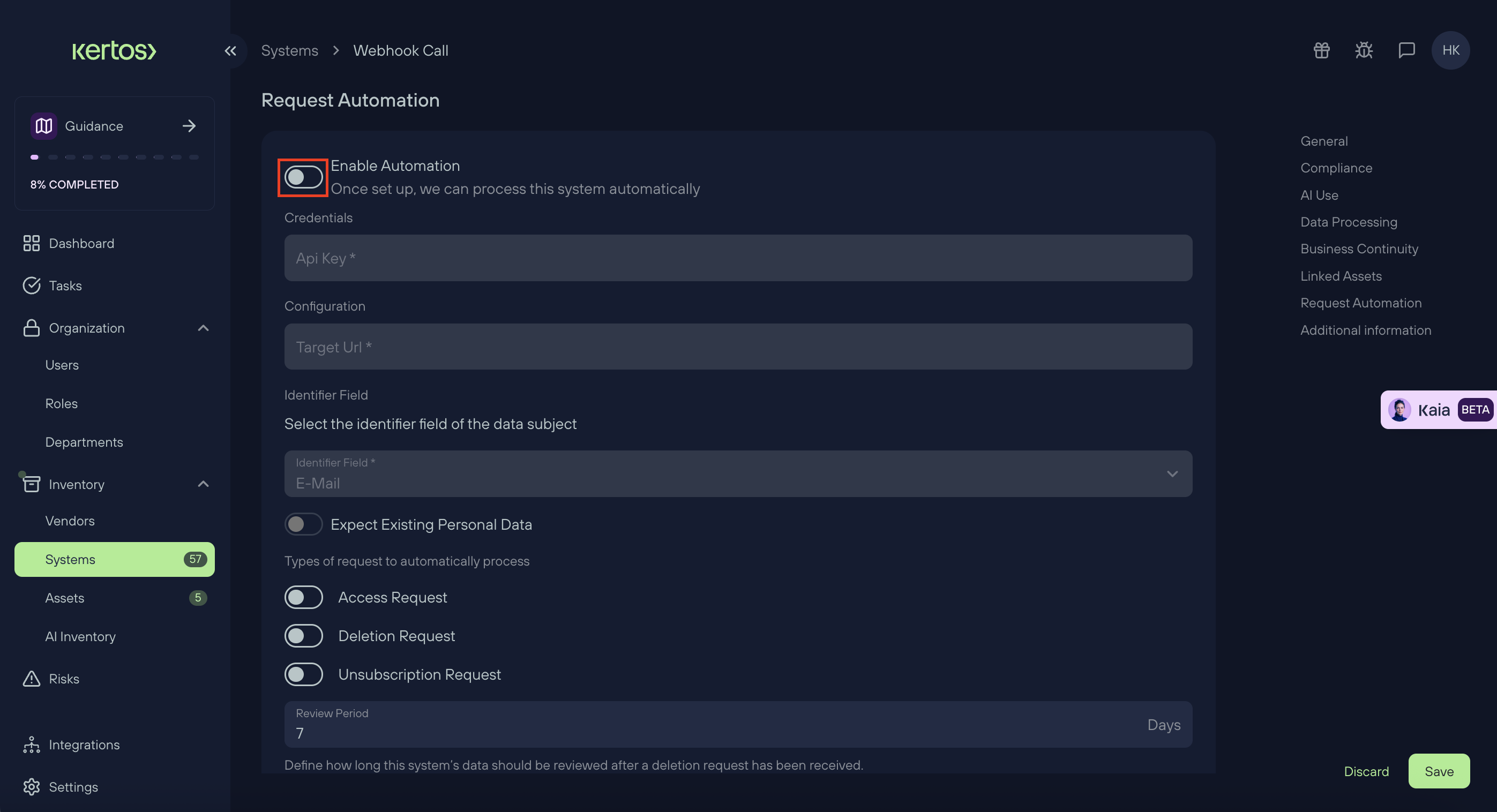Webhook API Docs for DSRs
General
The Kertos platform offers support to send a notification for a received data subject request via webhook. To be able to integrate a webhook into Kertos, the endpoint needs to be able to process a request payload that adheres to the following interface:
{
"data_subject_identifier": string,
"operation": "read" | "delete",
"received_at": string <date-time>
}
The payload contains three keys
data_subject_identifier
operation
received_at
The data_subject_identifier field is a unique string used to identify which data subject has issued a request. In most cases, the identifier is the email address of the requester. The operation field, which can either hold the value "read" or "delete" is used to indicate if the the webhook is expected to return all information found for the data subject (read) or if it is expected to delete all information connected to said data subject (delete). The field received_at holds a ISO 8601 date-time string indicating when the request was received.
Authentication
For authentication, a header-based approach is used. The Kertos plattform sends an API-key provided in the webhook-configuration on Kertos using a header called X-API-KEY . The webhook needs to verify if the API-key is correct and respond with the corresponding status code as described in the section “HTTP Response Codes”.
Request samples
Once a new request is created in Kertos, the webhook integration would send a POST request to the URL configured in Kertos for your webhook:
POST https://api.yourdomain.com/webhooks/gdpr/
The following request payload would indicate that jane.miller@kertos.io has issued a deletion request on the 24.08.2024 at 14:15:22 and should be deleted from the webhook recipient system accordingly.
{
"data_subject_identifier": "jane.miller@kertos.io",
"operation": "delete",
"received_at": "2024-08-24T14:15:22Z"
}
HTTP Response Codes
The following HTTP response codes can be sent by your webhook to indicate to Kertos that something has gone wrong:
200 OK
Should be used to indicate that the requested operation was performed successfully
401 Access token is missing or invalid
Should be used to indicate that authentication information is either missing or incorrect
404 Data subject not found
Should be used to indicate that no data subject could be found that matches the provided data subject indentifier
422 unprocessable entity, something is wrong with the sent object
Should be used to indicate that the input is malformed
Webhook Setup
Here is how you can enable the webhook in Kertos:
1. In Kertos, go to “Systems”.
2. Click on "Add System".

3. Search for "Webhook Call" and select from list of available systems.

4. In the System Detail view, scroll down to Request Automation.
5. Click "Enable Automation" and provide details.
